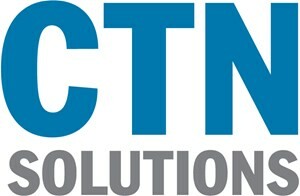If you’ve ever managed a major IT project, you’re probably well acquainted with Murphy’s Law: “Anything that can go wrong, will go wrong.” Every project is going to have some rough patches. The key to overcoming these challenges lays not with the execution of the plan, but with the preparation. Here are four things to consider when you’re planning your next long-term IT project.
Know Your Needs
Believe it or not, understanding exactly what your company needs from a project and translating that into a well-defined strategy with realistic goals, may be the difference between success and failure. It’s wise to look at the big picture.
- What is the desired result?
- What does the project do for your business?
- How will the implementation of this project affect other departments?
- Will the project directly impact clients/prospects?
- Will there be any downtime?
- Does the team need to be educated about this project?
Budget for the Unknown
Prices go up. Projects get delayed. Accidents happen. Accept the fact that you’re going to run into an unplanned incident or two at some point throughout the duration of your project. The best way to make sure that your budget doesn’t come up short is by anticipating that there will be unforeseen expenses. Whenever possible, give yourself a bit of ‘wiggle room’ within your budget. Of course, you can’t predict the future – but you can look to previous projects for an idea of what sort of snafus you are likely to encounter. Giving yourself a bit of cushion when planning out your budget might end up saving you big time down the road – and if it turns out that you didn’t need that extra money, then congratulations! Your project was completed under budget!
Determine Benchmarks and Measurements
Especially important during a long-term IT project, figure out ways to measure and gauge the project’s progress before you begin the execution of it. This will help you maintain forward momentum, keep your budget in check and show areas that need improvements for the next time a similar project is required. Key performance indicators (KPIs) are ways to measure that success. Keeping track of the following metrics will help to measure progress:
- Actual Cost
- Cost Variance
- Earned Value
- Planned Value
- Return on Investment
Keep Everyone Informed
Too often in a project’s execution, only the project managers know how the project is fairing. Everyone else is only privy to the sections of the project that apply directly to them. Project managers are there to drive the project – and part of that is communicating with resources – both inside and outside of the project. For example, if your project is going to require the network to be offline, give advanced warning to those who will be impacted by this downtime. It is not only courteous, but helps to keep your project on track. There is nothing like having to delay your progress because there was an important meeting scheduled at the same time you had planned on taking the network offline.
There are many programs and applications available to those who are looking for ways to improve project organization and communication. Project management software gives project managers a unified solution where they’re able to track inventory, budget, KPIs, resources and a whole host of other moving parts.
As with most things in life, projects rarely go as planned. The project management team can make a plan, anticipate needs, and be ready to face whatever challenges are encountered. Do you have an IT project in mind but are unsure of how to manage and execute it? Contact CTN Solutions today at (610) 828-5500.
